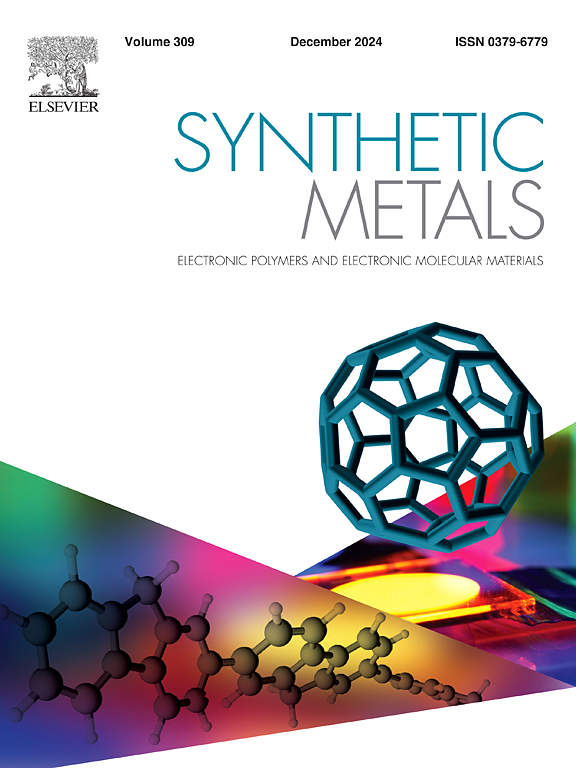用于环境修复和生物医学应用的转基因Ag/MgO纳米复合材料:通过分子对接计算研究预测蛋白质-配体相互作用
IF 4.6
3区 材料科学
Q2 MATERIALS SCIENCE, MULTIDISCIPLINARY
引用次数: 0
摘要
本研究报道了采用一锅绿色法制备银/氧化镁纳米复合材料(Ag/MgO NC)。紫外可见光谱在259 nm和416 nm处有一个峰值,证实了Ag/MgO NC的形成。利用紫外可见数据和Tauc方程估计带隙为3.89 eV。利用Debye Scherer方程和XRD数据,观察到Ag/MgO NC的平均粒径为12.5 nm。SEM对Ag/MgO NC的表面形貌进行了表征,计算出其平均粒径为21.8 nm,呈球形。通过SEM-EDX分析确定了NC的化学成分。XPS进一步证实了NC中化学成分及其氧化态的存在。此外,还分析了NC对4种病原菌的生物效率。通过分子对接计算研究证实了NC对金黄色葡萄球菌和大肠杆菌的抑制倾向。氨基酸与NC/生物活性分子的相互作用证实了其活性。并将分子对接结果与阿莫西林作为标准药物进行比较。受体大肠杆菌与生物活性分子、Ag/MgO NC和阿莫西林药物的结合能最高,分别为- 4.34 Kcal/mol、- 4.77 Kcal/mol和- 5.56 Kcal/mol。测定了NC的抗氧化能力,其IC50值为211.5 μg/mL。另外,考察了Ag/MgO纳米材料在阳光直射下对亚甲基蓝(MB)染料的降解效率,在110 min后,降解率为82.6 %。本文章由计算机程序翻译,如有差异,请以英文原文为准。
Transgenic Ag/MgO nanocomposite for environmental remediation and biomedical implementations: Prediction of protein-ligand interactions by molecular docking computational study
This study reports the preparation of Silver/Magnesium Oxide nanocomposite (Ag/MgO NC) from Pseudarthria viscida plant extract through the one-pot green approach. The UV–visible spectrum shows a peak at 259 nm and 416 nm confirms the Ag/MgO NC formation. The band gap was estimated as 3.89 eV using UV–visible data and Tauc’s equation. The average particle size of the Ag/MgO NC was observed as 12.5 nm using the Debye Scherer equation and XRD data. The SEM identifies the surface morphology of Ag/MgO NC, the particle average size was calculated as 21.8 nm with a spherical shape. The chemical composition of NC was confirmed through SEM-EDX investigation. The presence of chemical compositions and their oxidation states in the NC further confirmed by XPS studies. Furthermore, biological efficiency of NC was analyzed against four bacterial pathogens. The inhibition tendency of NC against S. aureus and E. coli was confirmed by the molecular docking computational study. The interactions between the amino acids and NC/bioactive molecule confirms the activity. The molecular docking results were compared with Amoxicillin as a standard drug. The receptor E. coli shows the highest binding energies such as −4.34 Kcal/mol, −4.77 Kcal/mol, and −5.56 Kcal/mol with bioactive molecule, Ag/MgO NC and Amoxicillin drug, respectively. The antioxidant efficiency of the NC was determined, and the IC50 value was found to be 211.5 μg/mL. In addition, the methylene blue (MB) dye degradation efficiency of the Ag/MgO NC was examined under direct sunlight irradiation, the observed degraded dye was 82.6 % after 110 min.
求助全文
通过发布文献求助,成功后即可免费获取论文全文。
去求助
来源期刊

Synthetic Metals
工程技术-材料科学:综合
CiteScore
8.30
自引率
4.50%
发文量
189
审稿时长
33 days
期刊介绍:
This journal is an international medium for the rapid publication of original research papers, short communications and subject reviews dealing with research on and applications of electronic polymers and electronic molecular materials including novel carbon architectures. These functional materials have the properties of metals, semiconductors or magnets and are distinguishable from elemental and alloy/binary metals, semiconductors and magnets.
 求助内容:
求助内容: 应助结果提醒方式:
应助结果提醒方式:


